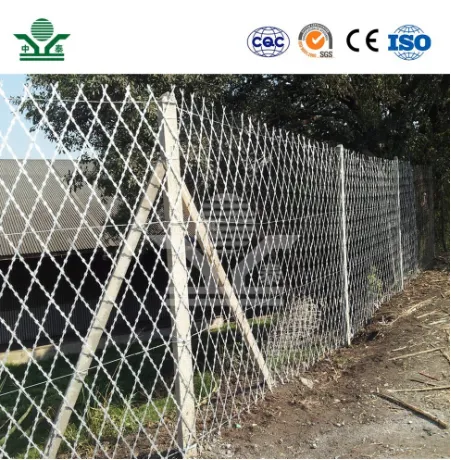Understanding Types of Noise Barriers An Essential Guide
Noise pollution is an often-overlooked issue that significantly affects our quality of life. It can originate from various sources, including highways, railroads, construction sites, and industrial areas. To combat this auditory intrusion, engineers and urban planners have developed noise barriers. These structures serve as effective shields, minimizing the impact of noise on residential areas and enhancing environmental comfort. This article explores different types of noise barriers, their design, and their effectiveness.
1. Concrete Noise Barriers
Concrete noise barriers are among the most commonly used types. They are often found alongside highways and major roadways. The mass and density of concrete make it excellent for sound attenuation, as it effectively blocks and absorbs sound waves. These barriers can be integrated into the surrounding landscape with various designs and colors to improve aesthetic appeal. Although durable and effective, concrete barriers can be costly and may require significant investment.
2. Earth Berms
Earth berms are natural noise barriers created from soil and vegetation. They can be effective at blocking sound if properly designed with adequate height and width. The natural characteristics of earth can help absorb sound, while the vegetation can also serve as an aesthetic enhancement. However, earth berms require ample space and maintenance, particularly in terms of managing vegetation. They are often used in residential areas to create a more harmonious balance between urban development and nature.
Wooden noise barriers offer a more aesthetically pleasing option compared to concrete or vinyl. They are particularly popular in rural or suburban settings, where they can blend into the natural environment. While wood is not as effective as denser materials in terms of sound reduction, it can still provide a significant attenuation effect when constructed properly. Furthermore, wooden barriers can be treated with various stains and finishes, enhancing their visual appeal. However, they may require more maintenance over time due to weathering.
types of noise barriers

4. Vinyl Noise Barriers
Vinyl noise barriers are a popular alternative to traditional materials. They are lightweight, flexible, and often easier to install than concrete or wood. Vinyl barriers are designed with sound-absorbing qualities and can effectively reduce noise levels. They come in various colors and textures, allowing for more customization to suit the surrounding environment. Additionally, vinyl does not rot or require regular maintenance, making it a cost-effective choice in the long term. However, some vinyl barriers may be less effective at extremely high frequencies.
5. Composite Noise Barriers
Composite barriers are engineered from a combination of materials, such as plastic, wood, and recycled materials. These barriers utilize the benefits of different substances to create a more effective noise-reduction solution. For instance, they can combine the aesthetic appeal of wood with the durability of plastic, resulting in an environmentally friendly product that reduces sound but also minimizes maintenance requirements. Composite barriers are an excellent option for those looking to balance functionality with environmental sustainability.
6. Green Noise Barriers
A growing trend in noise abatement technology is the implementation of green noise barriers, which incorporate living plants and greenery. These barriers not only help filter noise but also contribute to local biodiversity and air quality. The vegetation absorbs sound, while the structure can be designed to assist in stormwater management. Green barriers are becoming increasingly popular in urban settings, where they offer a dual benefit of noise reduction and environmental enhancement. However, they require regular maintenance and care to ensure the health of the plants.
Conclusion
Noise barriers play a crucial role in mitigating urban noise pollution, significantly impacting the quality of life for millions of people. From concrete walls to vibrant green barriers, the variety of options available allows communities and planners to select the best solutions for their specific needs. As urban areas continue to expand and the demand for effective noise control grows, the continued innovation in noise barrier designs will be essential in creating more livable spaces. Understanding the various types of noise barriers and their implications can help stakeholders make informed decisions that enhance both environmental quality and community well-being.
-
The Best Metal Mesh Solutions: Expanded Aluminum Metal vs. Expanded Stainless Steel Metal
NewsSep.10,2024
-
Round Perforated Sheets vs. Hexagonal Perforated Sheets vs. Embossed Perforated Sheet Metal
NewsSep.10,2024
-
Perforated Metal Sheets
NewsSep.10,2024
-
Experience The Excellence Of Stainless Steel Grating
NewsSep.10,2024
-
Discover the Versatility Of Metal Mesh Expanded Forming Machines
NewsSep.10,2024
-
Discover The Advantages Of Steel Grating For Sale
NewsSep.10,2024
Subscribe now!
Stay up to date with the latest on Fry Steeland industry news.

